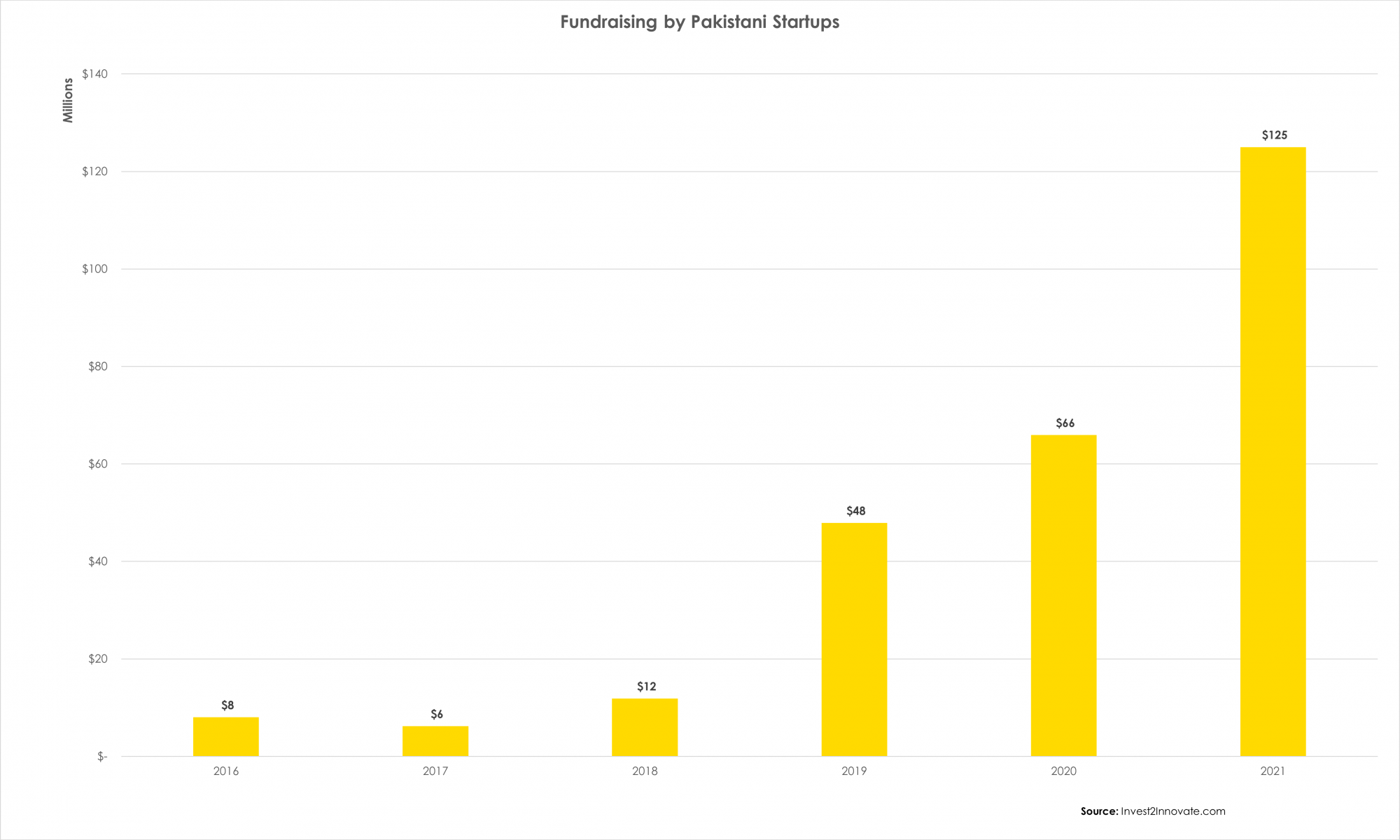Pakistan, the world’s fifth most populous country, has been slow to adapt to the internet economy. Unlike other emerging economies such as China, India and Indonesia, which have embraced digitization and technology, Pakistan has trailed the region in the adoption of technology and startup formation.
Despite this, investors have dreamed for years of the huge opportunities in unlocking Pakistan’s potential as a digital economy. As a country of 220 million people, almost two-thirds of whom are under the age of 30, Pakistan draws natural comparisons to Indonesia — which has rapidly emerged as one of the most vibrant technology ecosystems outside the U.S. and China.
In 2021, Pakistani startups are on track to raise more money than the previous five years combined.
After years of lagging behind, over the course of the past 18 months, Pakistan’s technology ecosystem has come to life in unprecedented fashion. In 2021, Pakistani startups are on track to raise more money than the previous five years combined. Even more excitingly, a large portion of this capital is coming from international investors from across Asia, the Middle East and even famed investors from Silicon Valley.

Image Credits: Mikal Khoso
The rapid emergence of Pakistan’s technology ecosystem on the international stage has been no accident — it’s the result of a confluence of changing facts on the ground and shifting dynamics in the startup and investing world as a result of the pandemic.
Unlocking Pakistan’s potential
The sudden emergence of Pakistan’s tech ecosystem on the international stage has been driven by three major factors: an improving security situation, quickly growing mobile connectivity, and critical legal changes and deregulation.
As a frontline state and coalition partner in the United States’ invasion of Afghanistan, Pakistan saw fatalities from terrorist violence soar from 295 in 2001 to a peak of over 11,000 in 2009. This climate of instability and violence scared away international business and investors from Pakistan for much of the first two decades of the 21st century.
Source: Tech Crunch


